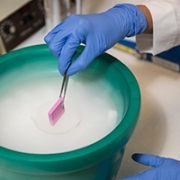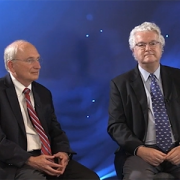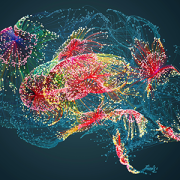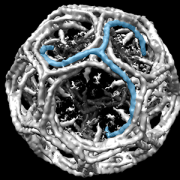
What’s Known
Needle biopsies help to guide diagnosis and targeted therapies for diffuse intrinsic pontine gliomas (DIPGs), which make up 10 percent to 15 percent of all pediatric brain tumors but carry a median survival of 9 to 12 months. This dismal survival rate compares with a 70 percent chance of children surviving other central nervous system tumors five years post diagnosis. In DIPG, tumors appear in the pons, an area of the brain that houses cranial nerve nuclei. Surgical options are limited. Spatial and temporal tumor heterogeneity is a major obstacle to accurate diagnosis and successful targeted therapy.
What’s New
The team sought to better define DIPG heterogeneity. They analyzed 134 specimens from nine patients and found that H3K27M mutations were ubiquitous in all 41 samples with oncogenic content, and always were associated with at least one partner driver mutation: TP53, PPM1D, ACVR1 or PIK3R1. These H3K27M mutations are the initial oncogenic event in DIPG, writes the research team led by Children’s National Health System. “Driver” mutations, such as H3K27M, are essential to begin and sustain tumor formation. This main driver partnership is maintained throughout the course of the disease, in all cells across the tumor, and as tumors spread throughout the brain. Because homogeneity for main driver mutations persists for the duration of illness, efforts to cure DIPG should be directed at the oncohistone partnership, the authors write. Based on early tumor spread, efforts to cure DIPG should aim for early systemic tumor control, rather focused exclusively on the pons.
Questions for Future Research
Q: If a larger sample size were analyzed, what would it reveal about the true heterogeneity/homogeneity status of DIPGs?
Q: “Accessory” driver mutations are not absolutely essential but do help to further promote and accelerate tumor growth. What is their precise role?
Source: “Spatial and Temporal Homogeneity of Driver Mutations in Diffuse Intrinsic Pontine Glioma.” H. Nikbakht, E. Panditharatna, L.G. Mikael, R. Li, T. Gayden, M. Osmond, C.Y. Ho, M. Kambhampati, E.I. Hwang, D. Faury, A. Siu, S. Papillon-Cavanagh, D. Bechet, K.L. Ligon, B. Ellezam, W.J. Ingram, C. Stinson, A.S. Moore, K.E. Warren, J. Karamchandani, R.J. Packer, N. Jabado, J. Majewski, and J. Nazarian. Published by Nature Communications on April 6, 2016.











